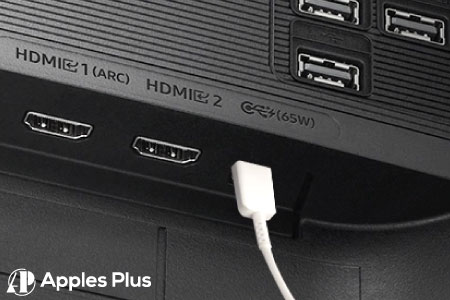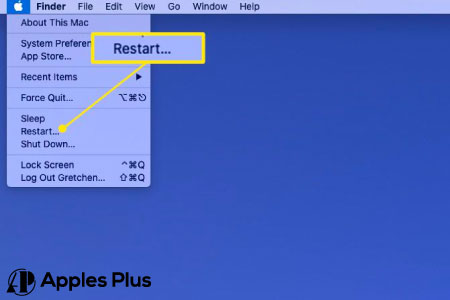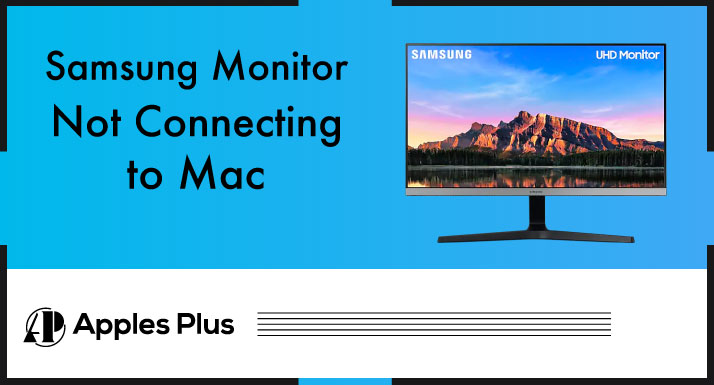Connecting a Samsung monitor to a Mac computer is usually a straightforward process that involves connecting the monitor to the Mac using a compatible cable.
However, some Mac users may encounter issues with their Samsung monitor not connecting to their Mac, which can be frustrating and affect productivity. Several factors can cause this problem, including connection issues, input source problems, display settings, outdated drivers, or hardware issues.
In this blog post, we will explore some troubleshooting steps to help resolve the issue and get your Samsung monitor up and running again.
Why My Samsung Monitor Not Connecting to Mac?
There could be several reasons why your Samsung monitor is not connecting to your Mac. Here are some steps you can take to troubleshoot the issue:
1. Check the Connections:
When checking the connection between your Samsung monitor and your Mac, there are several aspects to consider:

- Ensure the cables connecting your Mac to the Samsung monitor are securely plugged in. Check both ends of the cable to ensure they are plugged in properly.
- Ensure you use the correct cable type to connect your Mac to your Samsung monitor. Some Samsung monitors use HDMI cables, while others use DisplayPort or USB-C cables. Make sure you have the correct cable for your specific monitor model.
- Inspect the cables for any signs of damage, such as frayed or broken wires or bent or broken connector pins. If the cables are damaged, you may need to replace them.
- If the cables appear in good condition, try using a different cable to connect your Mac to your Samsung monitor. Sometimes cables can fail, so it’s worth trying a different one to see if that resolves the issue.
- If your Samsung monitor has multiple input ports, try using a different port to connect your Mac. Sometimes the input port may be faulty, so switching to a different port can help.
By checking these connection aspects, you can ensure that the physical connection between your Mac and Samsung monitor is functioning properly. If the issue persists, explore other troubleshooting options.
Check our detailed review on Best Monitors for MacBook Pro.
2. Check the input Source:
When checking the input source on your Samsung monitor, you need to ensure that the monitor is set to the correct input source for your Mac. Here are the steps to follow:

- The first step is to consult the user manual for your Samsung monitor to determine which input ports are available and which input source corresponds to each port.
- Locate the input source button on your Samsung monitor, usually on the front or side of the monitor. Press the button to display the input source menu.
- Using the monitor’s control buttons, navigate through the input source menu to select the correct input source for your Mac. If you need help determining which input source to select, refer to your monitor’s user manual.
- Once you have selected the correct input source, check to see if the Samsung monitor detects your Mac. If the connection is successful, Mac’s display should appear on the Samsung monitor.
If you still have trouble connecting your Mac to your Samsung monitor after selecting the correct input source, you may need to check your Mac’s display settings or try a different cable.
3. Check the Mac’s Display Settings:
When checking your Mac’s display settings to ensure it is set to output video to an external display such as your Samsung monitor, here are the steps to follow:

- Use the appropriate cable to ensure your Mac is properly connected to your Samsung monitor.
- Open System Preferences: Click on the Apple icon in the upper left corner of your Mac’s screen and select “System Preferences” from the dropdown menu.
- Within System Preferences, select the “Displays” icon. It will display the display settings for your Mac.
- If you have more than one display connected to your Mac, check the arrangement settings to ensure that the Samsung monitor is the primary display. It will ensure that all applications and windows are displayed on the Samsung monitor by default.
- Ensure that the resolution settings for the Samsung monitor are correctly set. If the resolution is too high, the display may not appear correctly, while a lower resolution can cause a fuzzy or blurry image. Select the recommended resolution for your Samsung monitor.
- If the scaling is too high, text and icons may appear too large on the Samsung monitor. Conversely, if the scaling is too low, text and icons may appear too small. Adjust the scaling settings to achieve a comfortable and easy-to-read display.
- Ensure that “Mirror Displays” is unchecked. It will enable your Mac to recognize the Samsung monitor as a separate display and extend the desktop to the monitor.
Following these steps and adjusting the necessary settings ensures your Mac can output video to your Samsung monitor. If the issue persists, explore other troubleshooting options.
4. Update Drivers:
When updating drivers for your Samsung monitor on a Mac, here are the steps to follow:
- Locate the model number of your Samsung monitor. This information can usually be found on the back of the monitor or in the monitor’s user manual.
- Visit the Samsung website and navigate to the support section.
- Once in the support section, locate the driver download page for your specific Samsung monitor model.
- Download the driver file for your Samsung monitor onto your Mac.
- Once the driver file has finished downloading, open the file and follow the installation prompts to install the driver.
- Once the driver installation is complete, restart your Mac to ensure the changes take effect.
- After restarting your Mac, check the settings on your Samsung monitor to ensure that it is set to the correct input source and that the display settings are correctly configured.
Updating your Samsung monitor drivers can help resolve compatibility issues and improve your monitor’s performance. If the problem persists after updating the drivers, you may need to explore other troubleshooting options.
5. Restart your Mac and Monitor:
If you’re experiencing connectivity issues between your Samsung monitor and Mac, restarting your Mac and monitor can be a practical troubleshooting step. Here are the steps to follow:

- Before restarting your Mac and monitor, ensure you have saved any unsaved work to avoid data loss.
- Click on the Apple icon in the upper left corner of your Mac’s screen, select “Shut Down” from the dropdown menu, and follow the prompts to shut down your Mac.
- Locate the power button on your Samsung monitor and press it to turn off the monitor.
- Wait for a few seconds to allow any residual power to dissipate.
- Press the power button on your Samsung monitor to turn it on.
- Once the Samsung monitor has fully powered on, press the power button on your Mac to turn it on.
- After your Mac and Samsung monitor has fully powered on, check the connection between the two. Ensure the monitor is set to the correct input source and the display settings are correctly configured.
Restarting your Mac and Samsung monitor can help reset connection issues and clear any temporary errors. If the problem persists after restarting both devices, you may need to explore other troubleshooting options or contact Samsung or Apple support for assistance.
Conclusion
In conclusion, a Samsung monitor not connecting to a Mac can be frustrating for Mac users. However, through proper troubleshooting steps, it is possible to resolve the problem and get your Samsung monitor connected and working again.
Some troubleshooting steps include checking the connection, input source, and display settings, updating drivers, restarting your Mac and monitor, and checking for hardware issues.
By following these steps and seeking assistance from Samsung or Apple support, users can overcome the problem and enjoy using their Samsung monitor with their Mac again.

Meet Harry, the author of Apples Plus! Harry is a highly skilled electronic engineer passionate about testing and reviewing tech products like monitors and soundbars. With years of experience in the industry, Harry has developed a keen eye for detail and an in-depth understanding of the latest tech trends and developments.


